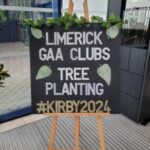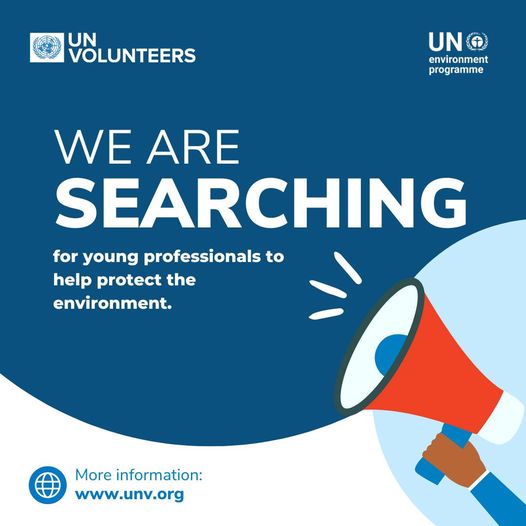
Gathered in the orchard near the Kayovu Primary School yard, young students clutched their mango tree saplings, ready to plant them in the holes we’d dug.
“I’ll call my tree Rumuli,” said one fourth-grade student.
In Kinyarwanda, the national language of Rwanda, ‘rumuli’ means light.
Light and hope are just what we want kids to feel when they plant trees and connect with the natural world – especially here in the Rwandan drylands, where there’s a lot to be done to reforest and safeguard our landscapes.
There is a saying in Kinyarwanda: Igiti kigororwa kikiri gito (the tree is straightened while it is young).
In other words, a child’s good character is taught while they are still young.
I believe this approach should guide us when we address global issues. We must train the younger generation to grow up with this spirit.
My name is Claudine Kamanzi, and I’ve made it my mission to educate young children about the importance of restoring our landscapes here in Rwanda.
I’m a 2024 GLF Dryland Restoration Steward and the founder of Forest4Life, an organization dedicated to restoring degraded land in Rwanda through reforestation, agroforestry and sustainable land management practices.
By planting native trees, training farmers in good agricultural practices and conservation agriculture, and engaging youth in environmental stewardship, we aim to enhance biodiversity, mitigate and adapt to the climate crisis, and ultimately build a sustainable future.

The current state of Rwanda’s landscapes
Today, the world is making significant efforts in reforestation, but they’re not enough: 6.37 million hectares of forest were permanently lost in 2023, 45 percent higher than the global deforestation target.
In my home country of Rwanda, some of the many drivers of land degradation include infrastructure development, illegal logging and the climate crisis.
One of the main repercussions from this degradation is soil erosion.
Rwanda is often called the ‘Land of a Thousand Hills.’ The western and northern provinces feature steep, hilly and mountainous terrains, while the eastern province, where I live in the Bugesera district, is flat with intense sunlight and minimal annual rainfall.
Wood is the domestic cooking fuel source for 90 percent of Rwandans. Some people are illegally cutting down trees for fuel wood and wood products, which is leaving our soils to slowly crumble away due to erosion.
Despite being an agrarian country, Rwanda has limited arable land. Many Rwandan farmers till their land twice or three times a year to aerate the soil. However, all this tilling often reduces the amount of organic material in the soil, making it even more prone to erosion, especially during the rainy season.
I’m passionate about this issue because I see firsthand how many farmers lack the knowledge they need to break this cycle.
Agroforestry, which involves planting trees alongside shrubs and crops, can be a great solution to increase soil health, but many farmers have a misconception that trees would compete with their crops for available nutrients.
One of our main goals with Forest4Life is to help educate youth and adults alike to inspire them to take care of our environment.

Making restoration fun for kids
Rather than focusing solely on teaching adults about environmental protection, we must start by embedding it in young minds.
At Forest4Life, we’re doing this by establishing environmental clubs in primary schools. We prepare areas for planting, hand out tree saplings to kids and even ask them to name their trees to encourage them to form an emotional bond with nature.
I loved working with Kayovu Primary School to found its first environmental club and tree planting initiative. I saw dozens of kids begin building relationships with the natural world, and it truly warmed my heart.
One way we make these tree planting activities engaging for schoolchildren is by choosing species that capture their attention and curiosity, such as trees that produce attractive flowers or fruits.
For instance, planting fruit trees like mangoes can be very effective. A grafted mango tree, which starts bearing fruit in just three to four years, can inspire children as they can see the outcome of their efforts while they are still in school.
Tree planting events are at the heart of our collaboration with local communities. This is also our chance to educate students, teachers and community members about the benefits of planting trees to feed our people, strengthen soil and host biodiversity.
We host plantings during Rwanda’s rainy seasons, which last roughly from March to May and from October to December, to ensure that the saplings establish strong roots. These events are not only about planting trees but also about nurturing a mindset of environmental stewardship.

Grafting trees, sowing the future of our drylands
Behind the scenes, my team and I plant tree seeds and graft saplings to prepare for planting sessions.
Grafting is a horticultural technique where the young shoot, also known as a scion, of one plant is joined with the rootstock of another to grow as a single plant. This produces desirable traits such as improved resistance to diseases, adaptation to specific soils and faster fruit production.
Knowing that planting works best with species adapted to a given environment, we grafted a hybrid mango called the Dodo mango, which is known for its resistance to diseases and adaptability to Rwanda’s hot climate.
We’ve also made scions from the Boribo and Kent mango varieties, which are particularly large, delicious and produce high yields.
Since we founded Forest4Life in September 2023, we’ve established an environmental club at Kayovu Primary School with around 40 students, and we hope to see this grow to include clubs in three more schools over the next two years.
We also aim to establish our own nursery for fruit trees and native trees to eventually produce 50,000 seedlings annually. This is just the beginning.
By planting trees at such a young age and seeing them grow to bear fruit, I hope these children will develop a lifelong connection and appreciation for trees. I hope they will remember the value of protecting and caring for the environment and building community along the way.





